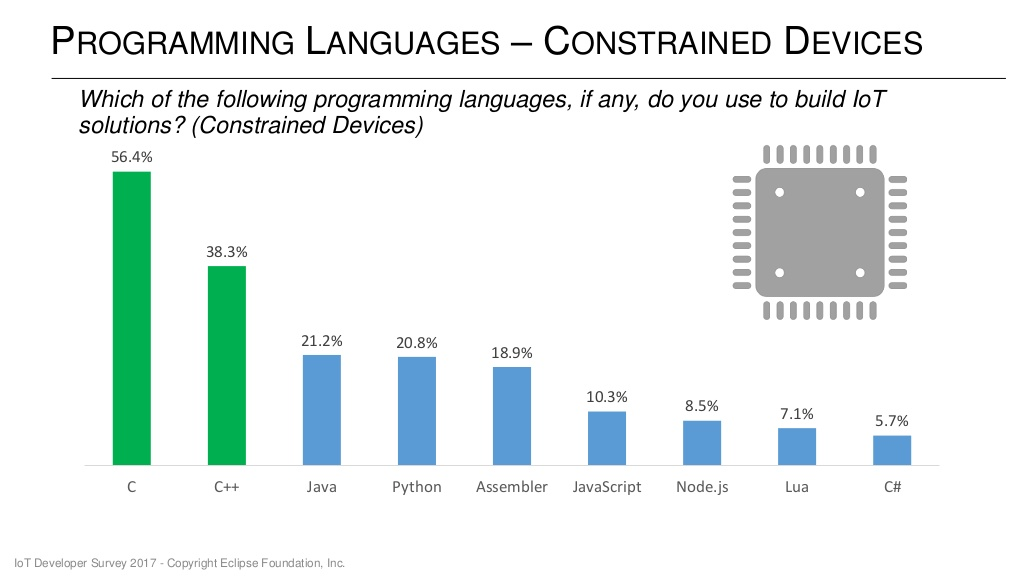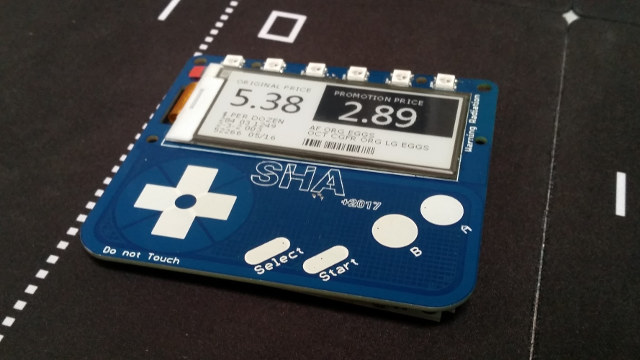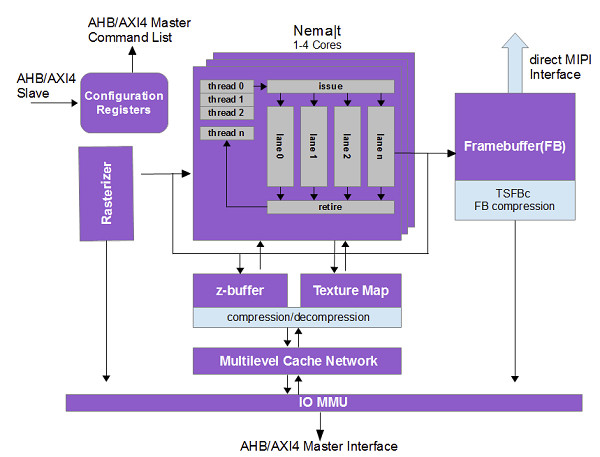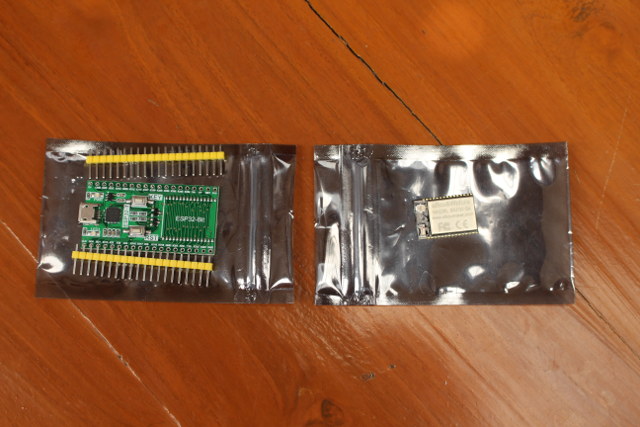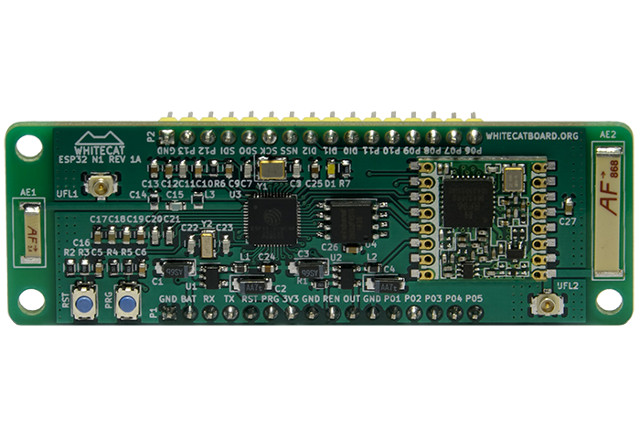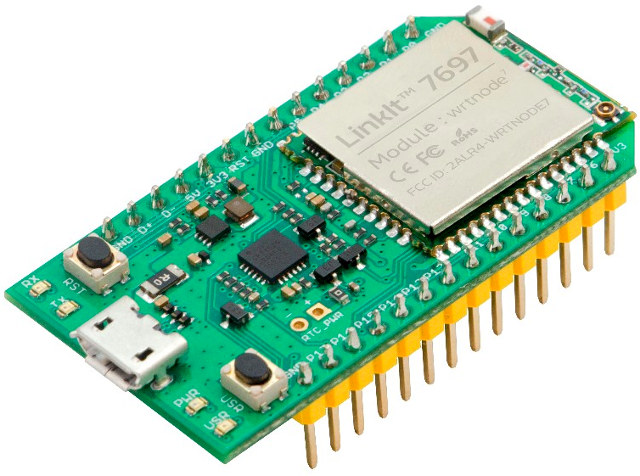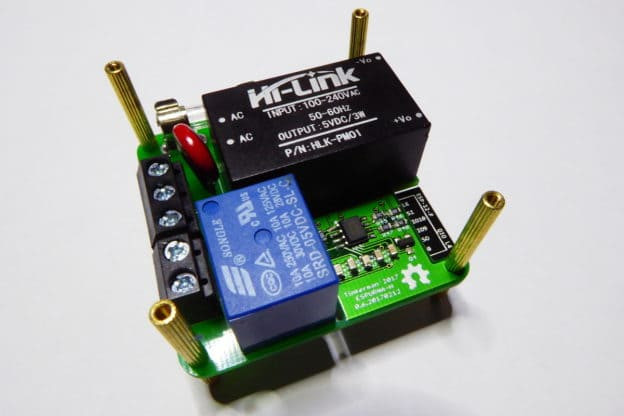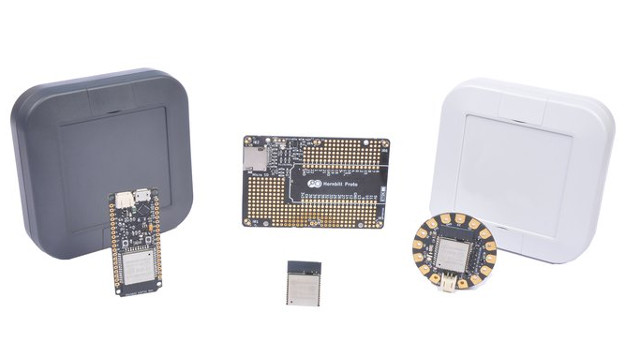The Eclipse foundation has recently done its IoT Developer Survey answered by 713 developers, where they asked IoT programming languages, cloud platforms, IoT operating systems, messaging protocols (MQTT, HTTP), IoT hardware architectures and more. The results have now been published. So let’s have a look at some of the slides, especially with regards to programming languages and operating systems bearing in mind that IoT is a general terms that may apply to sensors, gateways and the cloud, so the survey correctly separated languages for different segments of the IoT ecosystem. C and C++ are still the preferred languages for constrained devices, and developers are normally using more than one language as the total is well over 100%. IoT gateways are more powerful and resourceful (memory/storage) hardware, so it’s no surprise higher level languages like Java and Python join C and C++, with Java being the most used language with 40.8% […]
SHA2017 Conference Badge To Feature ESP32 SoC, e-Paper Display
In most conference, you’ll wear a badge showing your name, job description and company, but with the price of electronics going down, it may be time for a conference badge upgrade. SHA2017 is a non-profit outdoor hacker camp taking place in The Netherlands in 2017 on August 4 – 8, and the organizers are planning to use a special badge comprised of Espressif ESP32 processor, and an e-Paper Display. SHA2017 Badge specifications: Wireless Module – Espressif ESP32 based ESP-WROOM-32 module with WiFi and Bluetooth Display – 2.9″ e-paper display (296×128) Storage – micro SD slot Expansion – 12-pin expansion header with GPIOs, I2C, 3.3V, GND Debugging – micro USB port + USB->TTL chip for programming Misc – Direction keys, select, start, A and B buttons for input; 6x RGB, LEDs; pager motor for notifications Battery – Battery sized to last at least a day Beside your name and company details, […]
Think Silicon Ultra Low Power NEMA GPUs are Designed for Wearables and IoT Applications
When you have to purchase a wearable device, let’s say a smartwatch or fitness tracker, you have to make trade offs between user interface and battery life. For example, a fitness tracker such as Xiaomi Mi Band 2 will last about 2 weeks per charge with a limited display, while Android smartwatches with a much better interface need to be recharged every 1 or 2 days. Think Silicon aims to improve battery life of the devices with nicer user interfaces thanks to their ultra-low power NEMA 2D, 3D, and GP GPU that can be integrated into SoCs with ARM Cortex-M and Cortex-A cores. The company has three family of GPUs: NEMA|p pico 2D GPU with one core 4bpp framebuffer, 6bpp texture with/out alpha Fill Rate – 1pixel/cycle Silicon Area – 0.07 mm2 with 28nm process Power Consumption – leakage power GPU consumption of 0.06mW; with compression (TSFSc): 0.03 mW NEMA|t […]
Getting Started with ESP32-Bit Module and ESP32-T Development Board using Arduino core for ESP32
Espressif ESP32 may have launched last year, but prices have only dropped to attractive levels very recently, and Espressif has recently released released ESP-IDF 2.0 SDK with various improvements, so the platform has become much more interesting than just a few weeks ago. ICStation also sent me ESP32-T development board with ESP32-bit module, so I’ll first see what I got, before trying out Arduino for ESP32 on the board. ESP32-T development board with ESP-bit Module – Unboxing & Soldering One thing I missed when I asked for the board is that it was not soldered, and it comes in kit with ESP32-bit module in one package, and ESP32-T breakout board with headers in another package. The 21.5x15mm module is based on ESP32-DOWNQ6 processor with 32 Mbit (4MB) of flash, a chip antenna, and a u.FL connector. The module is apparently made by eBox, and also used in Widora board with […]
Whitecat ESP32 N1 Board Combines ESP32 WiFi + Bluetooth SoC with a LoRa Transceiver, Runs Lua RTOS
Espressif ESP32 SoC is gaining traction right now as prices have come down, and there’s still an on-going fight among LPWAN standards with LoRaWAN being fairly popular in Europe. Whitecat, a group of engineers from several companies based in Citilab, Barcelona, Spain, has designed a board that combines both ESP32 and a LoRA transceiver, bringing an alternative to Pycom LoPy board, but instead of running MicroPython, they have developed Lua-RTOS. Whitecat ESP32 N1 hardware specifications: SoC – Espressif ESP32 dual-core Tensilica LX6 microprocessor @ up to 240MHz with 520kB internal SRAM Storage – 4MB flash memory Connectivity LoRa WAN transceiver working in the 868 (EU) MHz / 915 (USA) MHz with on-board antenna, and u.FL connector for external antenna Integrated 802.11b/g/n WiFi transceiver with on-board antenna, and u.FL connector for external antenna Integrated dual-mode Bluetooth (classic and BLE) I/O Headers – 2x 16-pin with SPI, I2C, I2S, SDIO, UART, CAN, […]
$14 LinkIt 7697 Bluetooth 4.2 LE and WiFi IoT Board is Powered by Mediatek MT7697 ARM Cortex-M4 MCU
Mediatek Labs has launched a new IoT development, which on the surface looks similar to LinkIt Smart 7688 board, but the internal design is quite different as the MIPS processor and Linux OS, have been replaced by Mediatek MT7697 ARM Cortex-M4 processor running FreeRTOS, and beside WiFi, also includes support for Bluetooth 4.2 LE. LinkIt 7697 board specifications: Wireless SoC – Mediatek MT7697 ARM Cortex M4F MCU @ 192 MHz with 352KB RAM, 4MB flash, 802.11 b/g/n WiFi, Bluetooth 4.2 LE and a PMU Expansion – 2x 14-pin header with 18x GPIO, 2x UART, 1x I2C, 1x SPI, 18x PWM, 4x EINT, 4x ADC (0 to 2.5V), 1x IrDA, 1x I2S Debugging – 1x SWD, CP2102 UART to USB chipset Misc – Reset and user buttons; power and user LEDs Power Supply – 5V via micro USB port Dimensions – 48 x 26 mm The board can be programmed with […]
ESPurna-H is a Compact Open Source Hardware Board with ESP8266 WiSoC, a 10A Relay, HLW8012 Power Monitoring Chip
ESPurna is an open source firmware for ESP8266 based wireless switch as such Sonoff POW, which I’ve been personally using to monitor my office’s power consumption. The developer, Xose Pérez (aka tinkerman), has now developed his own hardware with ESPurna-H board, as existing wireless switches with power monitoring functions would not fit into a gang box. ESPurna-H board specifications: WiFi Module – ESP12 with Espressif ESP8266 WiSoC Relay – Songle SRD-05VDC-SL-C 10A relay with NO and NC connection Power Monitoring – HLW8012 chip as found in Sonoff POW Expansion – 2x 5-pin header with the programming GPIOs, and two connections for external button and LEDs Misc – Reset button Power Supply Input – 100 ~ 240V AC Output – 5V up to 600 mA via Hi-Link HLK-PM01 Safety – Optical isolation between the logic circuit and the relay circuit Dimensions – 50x50x20mm Xose designed the board with Eagle 8.0 and released […]
Hornbill ESP32 Development Boards Come with an Optional IP67 Rated Enclosure (Crowdfunding)
While there are plenty of ESP32 development boards, and prices have recently plummeted, getting a case for your project can still be a problem especially if you plan to use it outdoor, as you need to protect your hardware from rain and dust. Hornbill project offers two ESP-WROOM-32 based boards, a prototype board, and an IP67 certified case that could be useful for outdoor use. Hornbill ESP32 Development Boards Let’s start by checking the boards available starting with ” Hornbill ESP32 Dev” board with the following specs: ESP-WROOM-32 module with WiFi, Bluetooth LE, FCC, CE, IC, MIC (Telec), KCC, and NCC certifications I/O headers 2x 19-pin headers with GPIOs, I2C, UART, SPI, ADC, DAC, touch interface, VN/VP, 5V, 3.3V and GND Breadboard-friendly Debug – Built-in CP21XX USB-to-serial Power Supply – 5V via micro USB port, battery header + single cell LiPo charger Dimensions – TBD ESP32 Minima is also based […]


